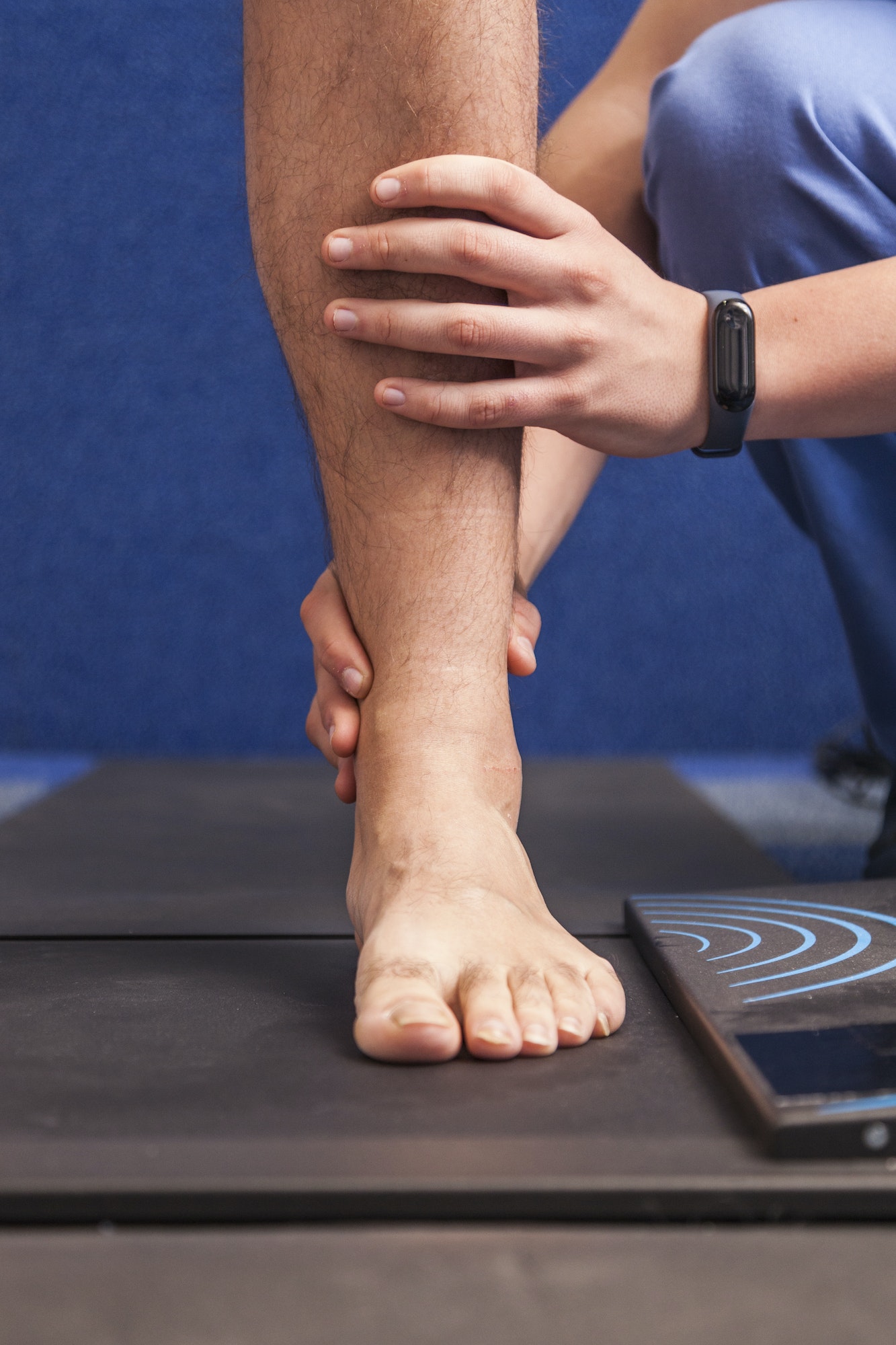Table of Contents
Training for a marathon can be an excellent way to maintain a healthy lifestyle, but it can also put significant stress on your feet. Marathon training is a grueling process, and any runner is bound to experience some aches and pains along the way. However, when it comes to foot injuries, ignoring the warning signs can lead to long-term damage and hinder your progress in reaching your marathon goals. When training for a marathon, it is important to take care of your feet to prevent injuries. Running long distances will put a great deal of stress on your feet, often resulting in injuries if proper precautions are not maintained. As your feet endure constant pressure and repeated impacts during long runs, it is essential to have a dedicated approach towards training and be committed to protecting your feet. This requires a significant amount of dedication and discipline over a prolonged period, as marathon training occurs over several months.
Preventing running injuries to your feet during marathon training requires a comprehensive approach that incorporates proactive injury management, proper footwear, disciplined training, stretching and cross-training, taking adequate rest when necessary, monitoring foot hygiene, and seeking treatment early for any noted pain or injuries. Following these precautions will assist runners in staying on track to achieve their training goals.
Proactive Injury Management
One important preventative measure is to start with an early visit for an evaluation with your Podiatrist who can evaluate your feet and your running style and identify if there are any warning signs even before you begin running. Foot structures vary widely and some structures, such as flat feet, or people with bunions are more likely to sustain injuries during a training program. When these foot structures, or other potentially problematic foot structures, are identified ahead of beginning a training regimen, your podiatrist can provide guidance and sometimes tools such as over-the-counter arch supports or custom orthotics to help prevent injuries before they start.
Proper Footwear
To prevent foot injuries when training for a marathon, it is recommended to wear proper running shoes. It is important to invest in high-quality running shoes that provide support and cushioning for the feet. It is essential to buy the right running shoe for your foot type, ensuring adequate support and stability during training. Visiting a running shoe store and undergoing a shoe fitting by an expert helps to ensure the proper shoes for your foot type. Also, runners should note that shoes don’t last forever. It is necessary to replace worn-out shoes to further reduce the risk of injury. As you log miles during marathon training, your running shoes will inevitably wear down and lose their effectiveness at providing support and cushioning. Experts recommend replacing your shoes every 300-500 miles, depending on the type of shoe and your individual training regimen. As stated before, wearing supportive synthetic running socks can also help prevent blisters and improve overall foot comfort.
Training Programs
It is essential to prioritize foot health and injury prevention throughout marathon training to cross the finish line with confidence. Consistent, gradual progress using a dedicated 18-20-week training program is the key to successful marathon training. There are many sources of good gradual training programs available online, through apps, or even better, through a local running club. Many local running clubs have experienced runners who have completed marathon training in the past and can lend support and experience. Coaches are also a great source of guidance and can be hired to help ensure appropriate gradual progress.
Stretching & Cross-training
Stretching both before and after running or any training activity allows the muscles, tendons, and ligaments to loosen, or warm up and then cool down, both of which contribute to injury prevention. Cross-training also aids in injury prevention by allowing the body “off days” to heal the running muscles, ligaments, and joints while maintaining cardiovascular output through swimming, biking, or other such exercises. Following a dedicated 18–20-week training program typically includes these types of exercise. With this type of training, runners can push themselves to achieve their personal best and reach the finish line injury-free.
Rest
Every runner has had an ‘off day’, or a day when they go out for their training and find that their body just isn’t feeling right. Listening to one’s body and taking time off from training, can aid in injury prevention. Take a shorter run, or opt to swim or bike, and then rest and relax. Additionally, if you’ve visited your podiatrist to address a concern such as pain or injury and the recommendation is to rest, make sure to follow the instructions before resuming training. Podiatrists are specialists of the foot and ankle, and they know how much rest is needed to allow a return to training at the earliest opportunity, while also ensuring that return is successful and injury-free.
Foot Hygiene
Pain Indicates Something Is Wrong
Common Injuries Runners Need to Watch For
Let’s now discuss the causes, symptoms, and treatment options for several running-related foot injuries so you can stay on top of your foot health to achieve the goal of crossing the finish line injury free. Common foot injuries that marathon runners may experience during marathon training include Heel Pain (typically, but not always Plantar Fasciitis), Stress Fractures, Blisters, and Tendinitis. These can all occur due to overtraining, improper footwear, not following a training program, or running on uneven surfaces. Prevention is key to avoiding these injuries. Preventative measures include wearing proper shoes with adequate support and cushioning, gradually increasing training intensity, and incorporating cross-training activities outside of your marathon training program to reduce the risk of these overuse injuries.
It is important to prevent and treat these common foot injuries while training for your next big race, no matter if you’re a seasoned marathoner or a first-time runner. It is also important to note that several of these conditions can occur simultaneously and even cause each other, which is why a visit to the podiatrist is crucial in determining the cause and arriving at an appropriate treatment plan.
Heel Pain & Plantar Fasciitis
Heel pain is very common among runners. It can be caused by a variety of problems, such as a stress fracture, tendonitis, arthritis, nerve irritation, and even, rarely, a cyst. By far the most common cause of heel pain in runners is a condition called plantar fasciitis, which is an inflammation of the band of tissue that runs from the heel to the toes. This tissue becomes inflamed because of repetitive stress. The symptoms include pain in the bottom of the heel. The pain is typically worse first thing in the morning or after resting for a long time, and it might go away after walking for a few minutes. If left untreated, the pain will increase over a period of months.
Stress Fractures
Stress fractures are small cracks in bones from repetitive impact and pressure that cause pain and swelling. Stress fractures occur when a bone in the foot becomes overloaded and these small cracks begin to form. Among runners, stress fractures are common in the metatarsal bones (the five long bones leading to the toes) and in the shin bone (which is called the tibia). Runners can also get stress fractures in the tarsal bones in the back of the foot and the heel bone. The symptoms are pain at the site of the fracture and sometimes swelling in that area.
Blisters
Blisters occur from friction and can be prevented by wearing properly fitted shoes and socks. The use of synthetic running socks [avoid cotton socks] decreases friction and wicks moisture away from the foot and therefore helps to avoid blistering to the feet from running. Left untreated, blisters can develop infections, calluses (sometimes painful), or even dangerous wounds. Blisters are an indicator that the foot is not being supported correctly in the shoe. Podiatrists can look at the foot and the shoe and then recommend over-the-counter arch supports or even custom orthotics which will better support the foot.
Tendinitis
Tendinitis, which is an inflammation of a tendon is a common injury seen in runners. The most common tendon involved is the Achilles Tendon, but any tendon can be the culprit. Several tendons run from the calf to the ankle and down to the foot, and these can become inflamed from running, or without proper warm-up and cool-down. The symptoms of tendonitis include pain and sometimes swelling in the path of the tendon. The pain is especially pronounced after you’ve been resting for a while.
Each of these injuries can limit your ability to train effectively for the marathon if not diagnosed and treated properly. Any discomfort or pain in the feet should be taken seriously and addressed immediately as these symptoms can worsen quickly and lead to more serious injuries if ignored.
Conclusion
In conclusion, preventing foot injuries during marathon training requires a proactive approach. Knowing how to prevent common foot injuries and seeking help from a podiatrist can help you stay on track toward your goal of completing a successful marathon. Foot injuries can be a major setback for any runner, especially when training for a marathon. However, by understanding the causes, symptoms, and treatment options for the most common foot injuries, you can take proactive steps to prevent them from occurring in the first place. With careful attention to your foot health and a commitment to rest and recovery, you can train effectively for a marathon while minimizing the risk of injury. Remember to listen to your body and seek medical attention if you experience any pain or discomfort while training. With the right mindset and preparation, you can overcome any foot injury and achieve your marathon goals. Happy running!

Meet Weil Foot & Ankle Institute
By: Weil Foot & Ankle Institute, Published: Apr 26th, 2023
Review By: Jeffrey Baker DPM – Apr 26th, 2023


